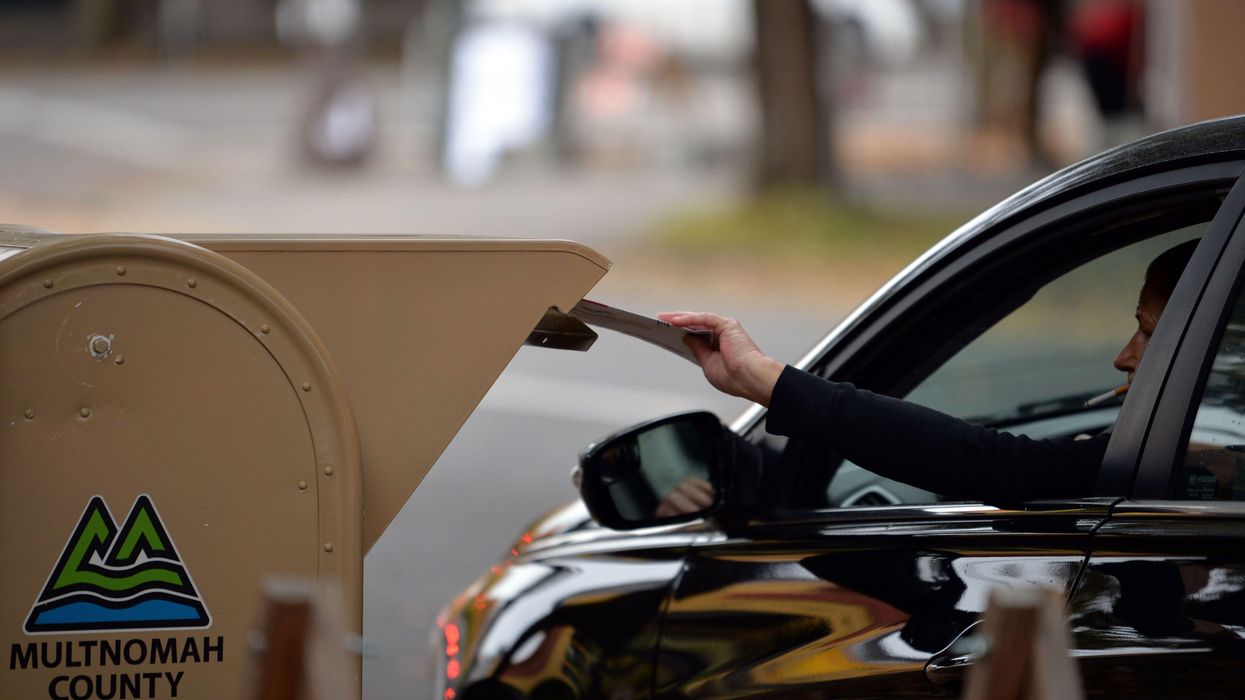This is the second in a four-part series examining possible outcomes of state legislative elections in 2022 and their potential impact on policy-making.
As Congress has become mired in gridlock, passing few meaningful bills each year, state governments have become home to most consequential legislative activity. That makes the 2022 midterm elections critical for anyone concerned about a myriad of issues, including reproductive rights and elections.
This installment examines likely outcomes in Nevada and Oregon and what they mean for constituents and the country as a whole. While Democrats are likely to retain control of both houses of each legislature, data indicates that Republicans have a fighting chance at victory, particularly in the state Senates.
For this series, the Fulcrum utilized ratings from Cnalysis and Sabato’s Crystal Ball to identify the most competitive legislative bodies. Ballotpedia data on election trends addresses the historic tendency for the president’s party to lose state legislative seats in the midterms, while Campaign Legal Center redistricting data explores possible advantages one party may have over the other.
Nevada
The 42-member Assembly and the 21-member Senate make up the Nevada Legislature. Currently, both chambers as well as the governor’s seat are held by Democrats, giving the Silver State a Democratic trifecta. Both houses could flip this November, though the Senate is more likely to switch hands than the Assembly.
Senate
Sabato’s Crystal Ball rates Nevada’s Senate as Lean D, explaining that population changes and a loss of support from some Hispanics may cause Democrats to lose ground in the state. Republicans consider Nevada one of their biggest opportunities to gain ground this year.
Cnalysis, on the other hand, rates the Senate as Likely D. There is little opportunity for change, according to the Cnalysis data, which has rated 47 percent of the districts safe for Democrats and 38 percent for solidly in the Republican camp. This leaves two tossup districts and one Lean D district that the Republicans must win to gain control.
The Senate was reliably Republican until 2008, but has mostly been held by Democrats in the years since. It largely follows national midterm trends, with the president’s party losing ground. Republicans gained the majority by one seat in the 2014 midterms, while Democrats went up by five in 2018. Currently, the Democrats have a four-seat margin.
Where control of state legislatures is up for grabs
Assembly
Nevada’s Assembly is rated Tilt D by Cnalysis with 33 percent of the seats most likely going to Republicans and 38 percent most likely going to Democrats. Republicans would have to win one district that leans in their favor, all four tossups, and three districts that lean toward Democrats to gain control of the chamber.
Sabato’s Crystal Ball rates the Assembly as a Likely D — though Republicans have a fighting chance and may gain some ground, Sabato doesn’t think they’ll be able to win the uphill battle to flip the chamber.
The Assembly has been consistently controlled by Democrats for much longer than the Senate. Republicans only gained control once in the past 20 years: during the 2014 midterm elections. The Democrats lost seats (but not their majority) in the 2010 midterms during President Barack Obama’s first term, and gained seats in the 2018 midterms with President Donald Trump in office, indicating that the chamber does follow midterm trends and that Democrats will likely lose at least part of their 10-seat majority this fall.
Key factors
In Nevada, maps made from the 2020 redistricting cycle are in effect, agreed upon by Democrats in the Senate, Assembly and governor’s office. The Campaign Legal Center indicates that the previous Senate map was slightly biased towards Democrats, despite being drawn by a court-appointed panel after no agreement was reached between the Republican governor and Democratic Legislature. Thus, the new maps created by a Democratic trifecta are likely further gerrymandered towards Democrats — a point Sabato’s Crystal Ball agrees with and includes in its reasoning for why Republicans may have difficulties gaining ground in Nevada.
Republicans even have a shot at flipping the entire trifecta in Nevada, with Gov. Steve Sisolak narrowly leading his Trump-backed challenger, Joe Lombardo. The State Assembly appears to be the least likely to flip and has the longest history in Democratic hands; however, even if it is just the Senate that flips, policy will change drastically in the Silver State.
Impact
Nevada has widely expanded access to voting over the past several years. Examples include bills that instituted an automatic voter registration system, allowed same-day voter registration, immediately restored voting rights to those with felony convictions upon their release, and made permanent Covid-19 emergency measures such as sending mail ballots to all registered voters.
If Republicans take control of one or both chambers of the Legislature, it is unlikely that further initiatives to increase voter access would succeed. Additionally, Republicans may be able to pass bills that have failed so far, such as requiring ID to vote, restricting third-party returns of absentee ballots, and repealing universal vote-by-mail and same-day voter registration.
The Nevada GOP platform indicates other changes they would make with control of the state government. Republicans oppose and would repeal Nevada’s “red flag” law and any other legislation restricting gun ownership for those 18 or over. They also oppose abortion, however, the right to an abortion was codified by a ballot referendum in 1990 and can now only be restricted or banned through another referendum or a federal law.
Oregon
The Legislative Assembly includes the Senate and the House of Representatives, with 30 and 60 members, respectively. Like Nevada, Oregon’s government is a Democratic trifecta. The Senate is more likely than the House to flip to Republican control, though Democrats are still favored to maintain their power.
Senate
Oregon’ Senate is rated Tilt D by Cnalysis. Most districts are not very contentious, with 46 percent safely Democratic and 40 percent cemented in the Republican camp. Republicans would have to win the remaining four races — one tilting their way, one a tossup, and two tilting toward Democrats — to wrest control of the Senate from Democrats.
Sabato’s Crystal Ball similarly gives Democrats a slight edge with a Lean D rating. Sabato explains that a mixture of Democrats vacating their seats, a strong Republican challenge to a Democrat who won a seat from a Republican appointee, and the deep unpopularity of Democrat Gov. Kate Brown — who has come to the end of her term limit — may combine to allow the GOP to win control of the seats they need.
The Senate has been in Democratic hands for the past 20 years. In recent years, the chamber has not always followed the widespread midterm trend of the president’s party losing seats in legislatures. This did hold true when the Democrats lost two seats in 2010 and the Republicans lost a seat in 2018. However, in 2014 — a year when Democrats lost 296 seats across state legislatures with Obama in the White House — they actually gained two seats in the Oregon Senate.
House of Representatives
Cnalysis rates Oregon’s House of Representatives as Lean D, more likely to remain in Democratic control than Senate, but still vulnerable to Republican gains. With 43 percent of the districts almost certainly going to Democrats and 35 percent virtually locked in for the GOP, Republicans have to win the lone district that leans their way, all three Toss-Ups, and six of the nine seats slightly favored for Democrats.
A complete Republican victory is unlikely according to Sabato’s Crystal Ball, which rates the House of Representatives Likely D. Sabato, however, does think Democrats will not only lose seats but are at risk of losing their three-fifths supermajority, which is necessary to pass revenue-raising measures. Such a result would significantly hinder their legislative agenda.
The House of Representatives has only been reliably under Democratic control since 2006, but shows a similar recent midterm election pattern to the Senate. In 2010, Democrats lost enough seats to have equal numbers with Republicans, and they also gained three in the 2018 midterms with Trump in office. In 2014 though, Democrats gained a seat despite holding the White House.
Key factors
Though there is no data available yet on whether Oregon’s new legislative maps are biased, history shows that they are likely biased towards Democrats. Oregon’s Constitution hands redistricting authority to the secretary of state if the governor and legislature cannot reach an agreement. In 2010, new maps were drawn without the involvement of the secretary of state for the first time in 100 years, by Oregon’s newly minted Democratic trifecta. According to the Campaign Legal Center, these maps were biased slightly towards Democrats, indicating that the new maps, also drawn with Democrats in the House, Senate, and governor’s seat, are likely similarly gerrymandered.
With competitive legislative races and polls showing the governor’s race as neck and neck between Democrat Tina Kotek and Republican Christine Drazan, big policy changes may be in store for the Beaver State.
Impact
If Democrats retain their trifecta, they will likely continue to expand voting rights in the vein of recent bills that have extended the amount of time voters have to return their mail ballots and required counties to print voter information pamphlets in the five most spoken non-English languages in their jurisdiction. Republicans would likely work to restrict voter access if they gain control in either chamber.
Other crucial areas are reproductive and LGBTQ+ rights and gun restrictions. Currently, abortion is both codified in law and protected by the state Constitution. However, the Oregon Republican Party Platform voices strong opposition to abortion. The GOP also opposes same-sex marriage, which was not codified in Oregon after a ballot measure was dropped once marriage equality was instituted at the national level. (The U.S. House of Representatives passed a bill Tuesday to protect same-sex marriage after the Supreme Court suggested it might review the issue. The Senate has yet to take up the bill.)
Additionally, the Oregon GOP opposes any gun restrictions, including gun-free zones and red flag laws, which Oregon currently has on the books. One of the “strictest gun control measures in the country” will also be on Oregon’s ballot this fall.



















